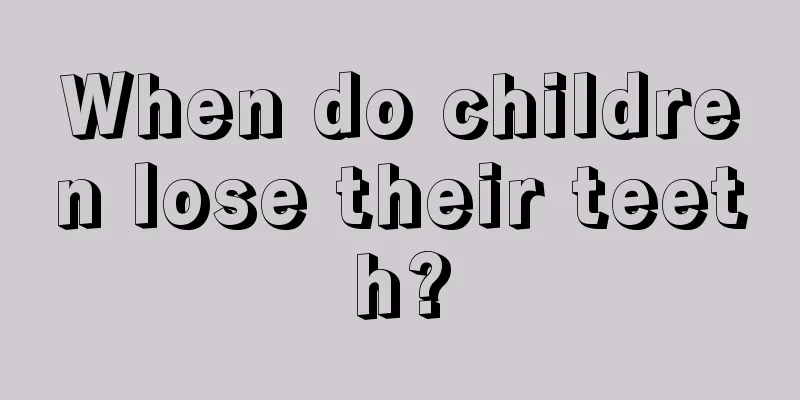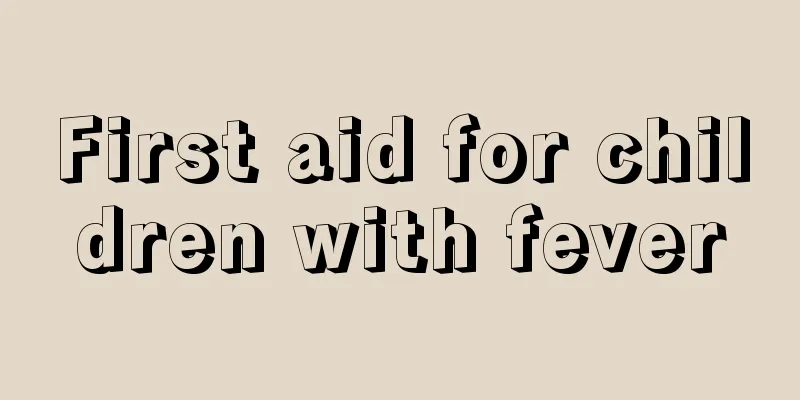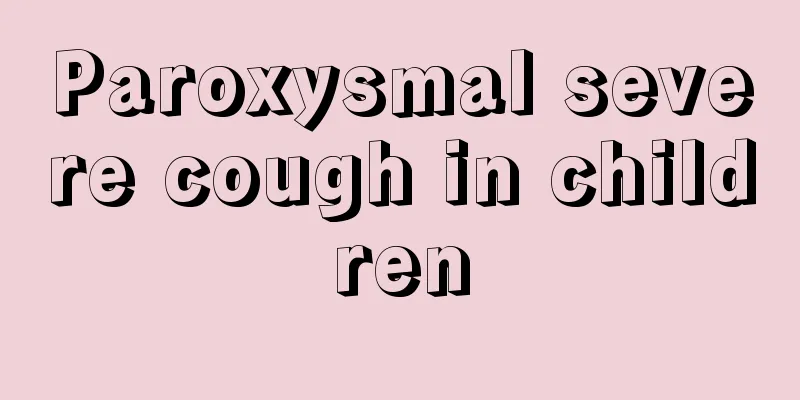When do children lose their teeth?

|
Under normal circumstances, babies start to change their teeth at the age of six, but some babies may start earlier and some may start later. Since each baby's physical condition is different, the timing of tooth replacement may be a little different. However, if the baby does not have any symptoms of discomfort, you don't need to worry too much. However, during the tooth replacement period, the baby must pay attention to his oral hygiene and drink more water. Precautions for children's tooth replacement 1. Always pay attention to the development of teeth Always pay attention to the growth of children's deciduous teeth and permanent teeth, and take children to see a dentist regularly so that problems can be discovered at any time and resolved early. 2. Develop a good habit of brushing your teeth Children should be urged to brush their teeth every day. It is best for adults to help brush their teeth before going to bed at night, especially the upper teeth which are more difficult to clean and are most likely to cause tooth decay. The six-year molars are also not easy to brush because they are located at the innermost part of the mouth. You should use toothpaste and toothbrushes specially designed for children. The toothbrush head should be as small as possible, otherwise the child will easily vomit when the toothbrush reaches the innermost part. In addition to brushing teeth, it is best for children to rinse their mouths after each meal to maintain oral hygiene. 3. Eating hard food During the period of children's tooth replacement, they should eat more foods that are high in fiber and have a certain degree of hardness, such as fruits, carrots, beans, corn, etc., to maintain a good stimulation to the deciduous teeth and promote the shedding of deciduous teeth on time. On the other hand, it also helps to stimulate the facial and eye muscles through chewing movements, accelerate blood circulation, and promote the development of gums, jaws and facial bones, which is both healthy and beautiful. 4. Promote calcium absorption To enhance children's calcium absorption, encourage your baby to eat more foods high in calcium, such as milk, cheese, tofu, canned fish, etc. At the same time, they should take in enough vitamin C and D, because these two vitamins are helpful for calcium absorption. 5. Avoid breathing through your mouth Try to prevent children from breathing through their mouths while they sleep. This is because when air flows through the mouth, the upper palate is subjected to upward pressure and cannot develop downward normally, causing the upper palate to bulge upward, and the left and right sides of the upper dental arch to become narrower, with the front part protruding forward. As a result, the erupted incisors not only tilt forward, but also are misaligned, forming gaps in the teeth. 6. Correct bad habits It is necessary to correct some bad habits of children in time, such as sticking out the tongue, biting the tongue, biting fingers or pencils, licking teeth with the tongue, etc. These bad habits will affect the growth of children's teeth and cause tooth deformation. 7. Protect permanent molars Special protection should be given to the first permanent molar that grows out in children around the age of 6 - the sixth-year molar, because it has the function of positioning and determining the height of the teeth in the entire mouth, has a great impact on the development of the child's jaw and face, and also plays an important role in the eruption and arrangement of other permanent teeth. 8. Avoid accidental tooth loss Children should be given safety education regularly to try to prevent tooth loss due to trauma. |
<<: What should I do if there is a big gap between my child’s front teeth after his teeth change?
>>: What causes intestinal effusion in children?
Recommend
Is there any way to increase height by sunbathing?
Height is the product of parents' genes and a...
What are the dangers of children eating too much salt?
Parents must be very cautious when adding salt wh...
What is the cause of congenital cerebral hypoplasia?
The birth of a child is originally accompanied by...
What to do if your child is allergic to mango
Parents and friends, we are more concerned about ...
What are the symptoms of early development in girls?
When girls reach puberty, they will begin to deve...
What to do if your child has a picky eating habit?
Children are lovable elves, and everyone likes ch...
What to do if your baby has a viral fever and diarrhea
A baby's viral fever will have many impacts o...
8 month old baby coughing with phlegm
Many babies have phlegm when coughing, and this s...
Can a newborn baby be bathed every day?
The health of newborns is of great concern to par...
Child walking on tiptoes
Children usually start learning to walk when they...
What causes lumps in little girls' breasts?
During the development period of little girls, ho...
What is the cause of the child's chicken swelling?
Swelling of children's genitals is mostly cau...
How to deal with a child’s fever?
Since children are young and have weak constituti...
What should I do if my child has a thick yellow tongue coating? The medicine is right beside you.
Parents must always pay attention to the baby'...
Six nutritional methods to help middle school students supplement nutrition
1. High-quality protein is essential Protein is t...









